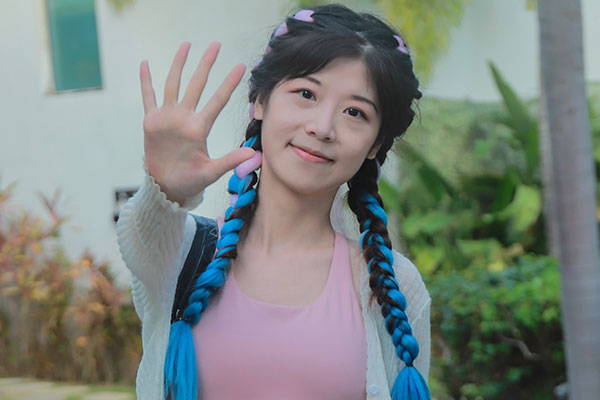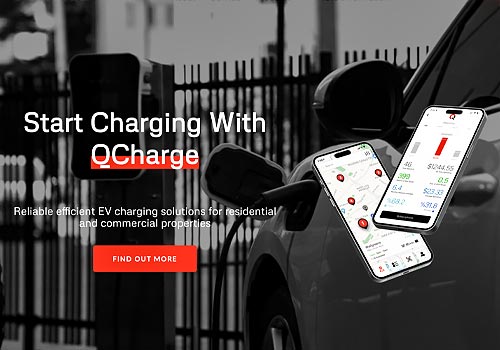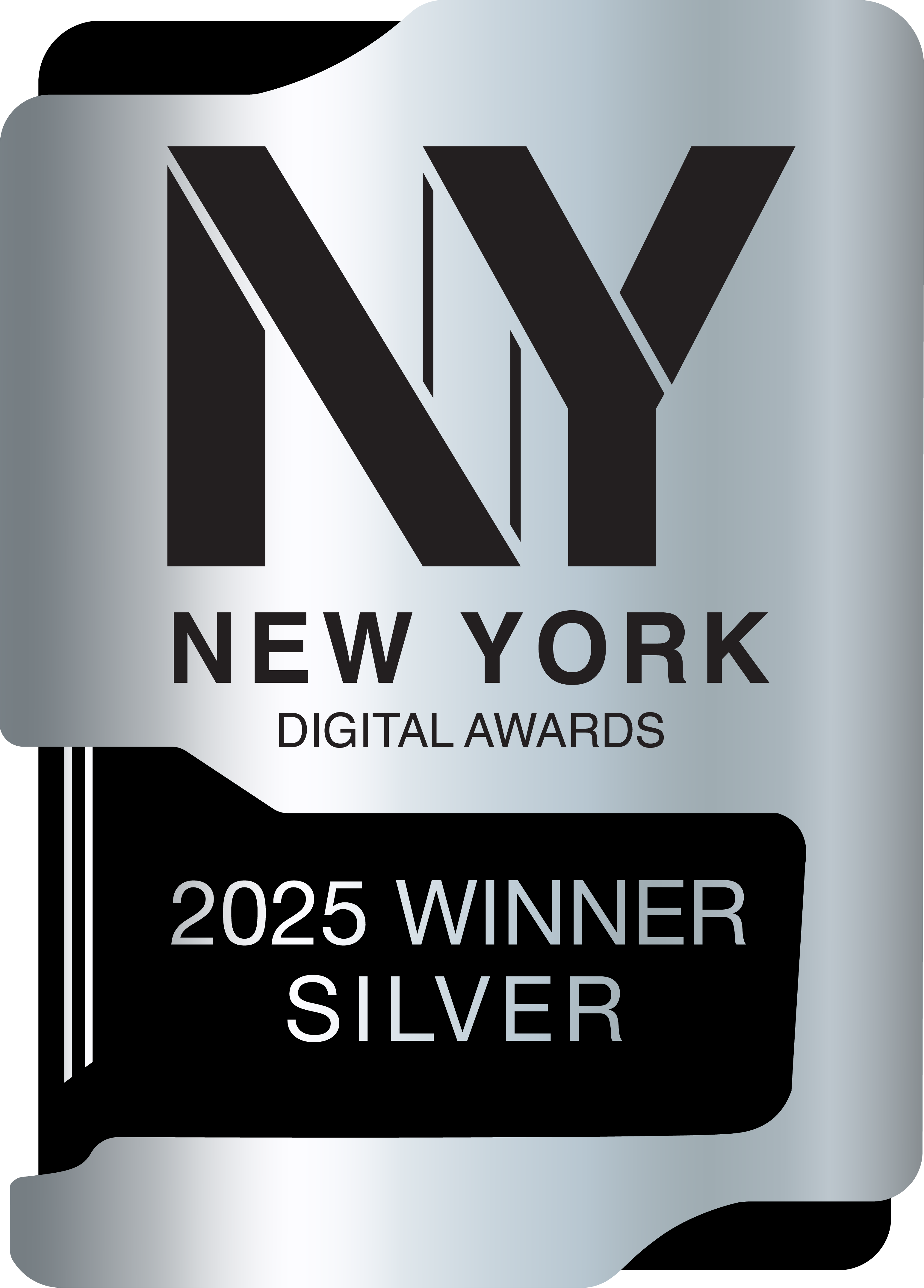
Yifei Wang
1. Congratulations on your achievements in the NY Digital! Could you start by introducing yourself or your agency? Can you also share a bit about your journey into your current industry?
Thank you! I’m Yifei Wang, a UX/Product Designer with a background in architecture and digital systems thinking. I began my journey in architecture—earning a Master’s from the University of Pennsylvania—where I was trained to think spatially, systemically, and humanistically. Over time, I found myself drawn to the speed and scalability of digital experiences. Since then, I’ve worked with startups and global companies across the US and Asia, designing end-to-end experiences in AI, EV mobility, fintech, and SaaS.
2. What inspired you to submit your work for this competition, and what does winning mean to you personally and professionally?
This project represents the culmination of design, research, and real-world impact. Submitting it felt like the right opportunity to honor the process and the people behind it. Winning the NY Digital Award is incredibly meaningful—it’s not just a personal recognition, but also a nod to the power of design in shaping how we interact with technology and solve human problems.
3. Can you share the story behind your success? What inspired its creation, and what do you feel it represents in today’s industry?
The awarded project was born out of the need to make EV charging more intuitive, secure, and future-ready. We explored facial and license plate recognition as alternatives to traditional login methods, merging digital design with physical interaction. It represents a growing movement in the industry: building seamless, AI-integrated, human-centered ecosystems that respond to real user behavior—especially in sustainability and smart mobility sectors.
4. What do you believe set your project apart in such a competitive field? Were there specific elements or strategies that made it shine?
I believe it stood out because of its combination of futuristic vision and grounded execution. We didn’t just propose a smart feature—we tested it, iterated with user feedback, and made sure it integrated with business and regulatory realities. The attention to both user emotion and technical feasibility helped make it tangible, not just conceptual.
5. Every project has its challenges. Can you share a significant obstacle you faced during this process and how you overcame it?
One challenge was designing for emerging biometric technology while maintaining usability and trust. We had to balance innovation with accessibility and legal compliance. We overcame it by prototyping across different environments, involving stakeholders early, and being transparent with users about data usage and control. Collaboration across disciplines was key.
6. Winning an award of this caliber often brings recognition. What do you hope this achievement will mean for your career, your team, or your agency in the long run? Have you already noticed any changes or opportunities arising from this recognition?
This win adds credibility to what we’re building. It has sparked new conversations with partners and collaborators who are equally invested in future mobility and AI-driven experiences. For me personally, it’s opened up opportunities to share more about our design approach at industry panels and conferences.
7. What has the reaction been from clients, audiences, or stakeholders about your winning entry? Any feedback or memorable moments that stand out?
Many of our partners were excited and proud—especially those who had been with us through the early “rough edges” of prototyping. A few even shared the award announcement on their company’s social channels, which really showed how collaborative and invested the community was in the project.
8. For those aspiring to achieve similar success, what advice would you offer to help them not only thrive in their industries but also craft compelling, award-worthy entries? Are there specific practices, mindsets, or strategies you believe are key?
Focus on impact and narrative. Awards judges see many beautiful designs, but they remember stories—how the project began, the problem it solved, and the people it served. Keep documentation from day one, measure your outcomes, and build with users, not just for them. Don’t be afraid to show iterations and even failures; they humanize your process.
9. The creative industry is constantly evolving. How do you view these changes, and where do you hope to position yourself in the future?
I’m inspired by how design is expanding beyond screens—into spatial computing, AI ecosystems, and sustainability infrastructure. I want to continue designing for emerging interfaces while keeping people at the center of those experiences. My goal is to contribute to systems that are not just smart, but meaningful.
10. Entering awards can be daunting for many, especially those just starting out. What would you say to individuals who have limited experience, or are hesitant to showcase their work in competitions? How can they build confidence and see the value in participating?
Start small and start early. You don’t need a perfect portfolio or a “famous” project—what matters is how you solve problems. Practice writing about your process clearly and find a mentor or peer to review your entry. Awards aren’t just about winning—they help you reflect, build confidence, and find your voice.
11. Creativity thrives on community. What message would you like to share with fellow creatives, marketers, and advertising professionals?
Don’t isolate creativity. The best design solutions often come from cross-functional tension and collaboration. Learn from engineers, users, business leads—and teach them too. Share unfinished work. Lift each other up. We’re building the future together.
12. Winning is a team effort in many cases. Is there someone or a group of people you’d like to dedicate this achievement to, and why?
I’d love to dedicate this to all the engineers, product managers, and testers who believed in design’s role from day one—and especially to those who pushed back when needed. Great products come from healthy debate and mutual respect, and this award is the result of that shared process.
13. If you could describe your award-winning entry in one sentence, what would it be and why?
It is a human-centered, AI-integrated design that reimagines how we interact with infrastructure—built with empathy and powered by technology.
14. Finally, what’s next for you? Any exciting projects or upcoming goals that you’d like to share with us and the audience?
I’m currently exploring how AI and spatial computing can reshape everyday interactions—from education to digital wellness. One of my upcoming projects involves designing an immersive storytelling experience that blends virtual reality with generative AI, aimed at supporting emotional well-being in children. I’m also working on refining my personal design methodology into a shareable framework for cross-disciplinary teams, with plans to contribute more to the design community through writing, mentoring, and public speaking. My long-term goal is to create products that sit at the intersection of technology, empathy, and learning—designs that not only solve problems but also spark curiosity and growth.

